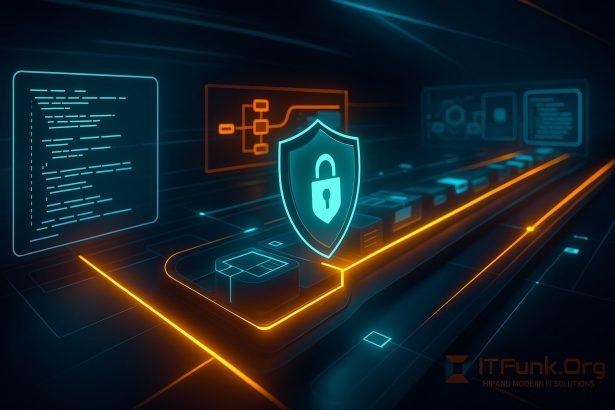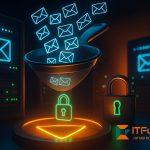Businesses face an ever-evolving landscape of cyber threats. Did you know that 70% of data breaches originate from vulnerabilities in custom applications? Adopting a secure software development lifecycle (SSDLC) isn’t just a best practice—it’s a business imperative to protect sensitive data, maintain customer trust, and ensure regulatory compliance.
Cybersecurity for Business
Your business faces constantly evolving cyber threats that can jeopardize sensitive data, disrupt operations, and damage your reputation. Our cybersecurity for business solutions are tailored to meet the unique challenges of companies of all sizes, providing robust protection against malware, phishing, ransomware, and more.
Whether you’re a small startup or a large enterprise, we offer multi-license cybersecurity packages that ensure seamless protection for your entire team, across all devices. With advanced features like real-time threat monitoring, endpoint security, and secure data encryption, you can focus on growing your business while we handle your digital security needs.
Get a Free Quote Today! Safeguard your business with affordable and scalable solutions. Contact us now to request a free quote for multi-license cybersecurity packages designed to keep your company safe and compliant. Don’t wait—protect your business before threats strike!
What Is the Secure Software Development Lifecycle?
The secure software development lifecycle integrates security considerations into every phase of software creation. Unlike traditional development models that bolt on security at the end, an SSDLC embeds threat modeling, secure coding standards, and continuous testing from day one. This proactive approach helps organizations:
- Reduce vulnerabilities early, when they’re cheaper to fix
- Streamline compliance with regulations such as GDPR or HIPAA
- Boost customer confidence by demonstrating a commitment to security
Key Phases of a Secure Software Development Lifecycle
1. Requirements & Planning
At the outset, security requirements should be defined alongside functional specifications. This includes:
- Identifying regulatory mandates (e.g., PCI DSS, GDPR)
- Conducting a risk assessment to prioritize assets and threats
- Establishing secure coding guidelines for your team
2. Secure Design
In the design phase, architects and developers collaborate to:
- Create threat models and data flow diagrams
- Define authentication, authorization, and encryption strategies
- Plan for secure third-party integrations and APIs
3. Secure Implementation
During development, enforce security through:
- Static Application Security Testing (SAST): Automated scanning of source code to catch common flaws (e.g., SQL injection, XSS).
- Peer Code Reviews: Encourage cross-team reviews to spot logic errors and adherence to coding standards.
- Secure Coding Frameworks: Leverage libraries and frameworks with built-in defenses.
4. Security Testing & Verification
Before deployment, subject applications to rigorous testing:
- Dynamic Application Security Testing (DAST): Simulate real-world attacks against running applications.
- Interactive Application Security Testing (IAST): Combine elements of SAST and DAST for deeper insights.
- Penetration Testing: Engage external experts to validate defenses from an attacker’s perspective.
5. Deployment & Release
A secure release process includes:
- Automated build pipelines with integrated security checks
- Hardened host and container configurations
- Secure key management and environment variable controls
6. Maintenance & Monitoring
Security doesn’t end at launch. Ongoing activities should cover:
- Automated Patch Management: Keep libraries, frameworks, and OS components up to date.
- Runtime Application Self-Protection (RASP): Detect and block attacks in real time.
- Log Analysis & SIEM: Centralize logs to spot anomalies and support incident response.
Best Practices for Implementing a Secure Software Development Lifecycle
- Champion Security Culture: Train all stakeholders—developers, QA, and operations—in the fundamentals of secure coding and threat awareness.
- Shift Left Security: Embed security tasks earlier in the SDLC to catch issues before they escalate.
- Automate Where Possible: Use CI/CD pipelines to enforce security gates, reducing manual overhead and errors.
- Measure and Report: Define Key Performance Indicators (KPIs) such as mean time to remediation (MTTR) and vulnerability density to track progress.
- Leverage Threat Intelligence: Subscribe to reputable feeds to stay ahead of emerging vulnerabilities and attack vectors.
Essential Tools & Resources for SSDLC
- Code Analysis: SonarQube, Veracode, Checkmarx
- Dependency Scanning: OWASP Dependency-Check, Snyk
- Container Security: Aqua Security, Twistlock
- Secrets Management: HashiCorp Vault, AWS Secrets Manager
- Security Information & Event Management (SIEM): Splunk, LogRhythm
These tools, when integrated into your development pipelines, accelerate detection of vulnerabilities and enforce consistency across teams.
The Role of SpyHunter Multi-License in Protecting Development Environments
While securing code is critical, protecting the endpoints where it’s written and tested is equally vital. SpyHunter’s Multi-License offering provides SMEs with:
- Comprehensive Malware Protection: Blocks keyloggers, trojans, and zero-day exploits that target development workstations.
- Scalable Deployment: One license pool, multiple installations—ideal for distributed teams and legacy hardware.
- Centralized Management Console: Monitor real-time threat alerts across all endpoints.
- Priority Support & Updates: Stay current with the latest threat intelligence and signature updates.
Equip your development teams with SpyHunter’s robust defenses to ensure that your SSDLC rests on a secure foundation. Purchase a Multi-License today and safeguard every phase of your software lifecycle.
Conclusion
Implementing a secure software development lifecycle is no longer optional—it’s a strategic necessity. By weaving security into every phase, from planning and coding to deployment and monitoring, businesses can drastically reduce the risk of breaches, ensure compliance, and deliver trustworthy applications to their customers.
Don’t leave your development environments exposed. Strengthen your SSDLC with proactive endpoint protection. Secure your multi-license pool of SpyHunter today and empower your teams to build safely and confidently.
Ready to elevate your security posture?
Invest in SpyHunter Multi-License for comprehensive threat protection across your organization’s software development lifecycle.
Cybersecurity for Business
Your business faces constantly evolving cyber threats that can jeopardize sensitive data, disrupt operations, and damage your reputation. Our cybersecurity for business solutions are tailored to meet the unique challenges of companies of all sizes, providing robust protection against malware, phishing, ransomware, and more.
Whether you’re a small startup or a large enterprise, we offer multi-license cybersecurity packages that ensure seamless protection for your entire team, across all devices. With advanced features like real-time threat monitoring, endpoint security, and secure data encryption, you can focus on growing your business while we handle your digital security needs.
Get a Free Quote Today! Safeguard your business with affordable and scalable solutions. Contact us now to request a free quote for multi-license cybersecurity packages designed to keep your company safe and compliant. Don’t wait—protect your business before threats strike!




